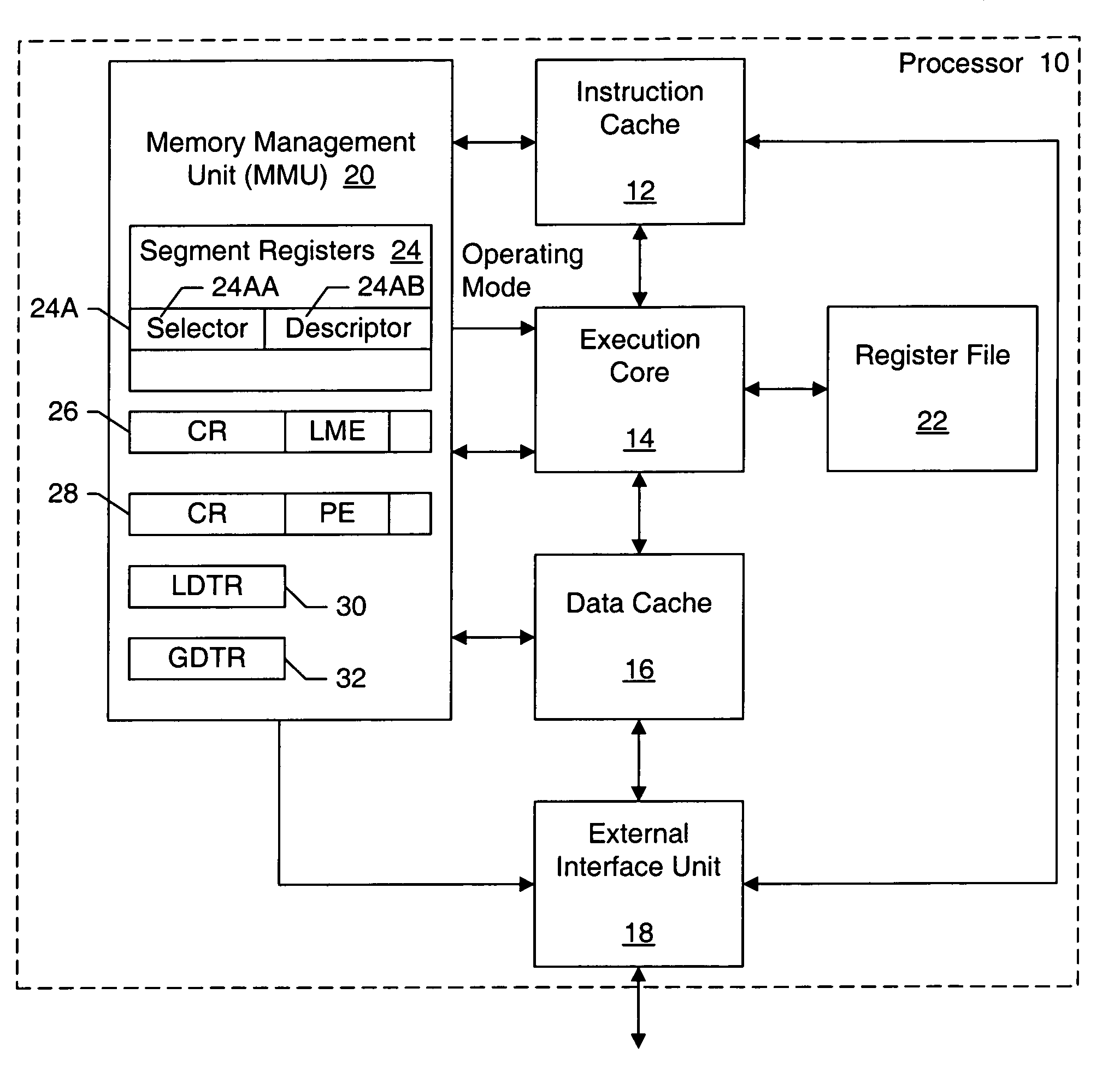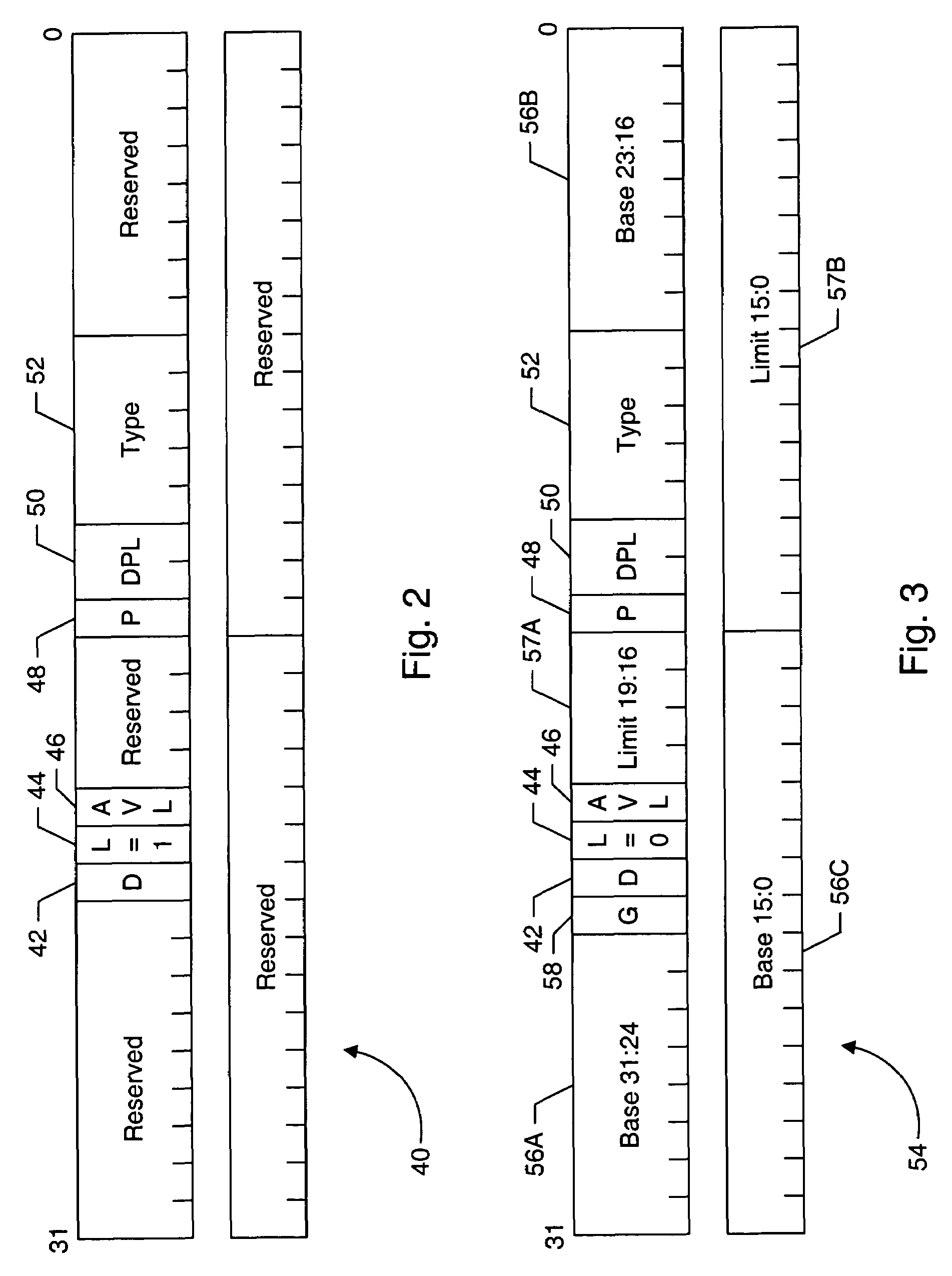Establishing an operating mode in a processor
a processor and operating mode technology, applied in the field of processors, can solve the problems of processors employing the x86 architecture that may not meet the needs of applications, and the x86 architecture is limited to a maximum 32 bit operand size and 32 bit address size, so as to simplify software compatibility
- Summary
- Abstract
- Description
- Claims
- Application Information
AI Technical Summary
Benefits of technology
Problems solved by technology
Method used
Image
Examples
Embodiment Construction
[0028]Turning now to FIG. 1, a block diagram illustrating one embodiment of a processor 10 is shown. Other embodiments are possible and contemplated. In the embodiment of FIG. 1, processor 10 includes an instruction cache 12, an execution core 14, a data cache 16, an external interface unit 18, a memory management unit (MMU) 20, and a register file 22. In the illustrated embodiment, MMU 20 includes a set of segment registers 24, a first control register 26, a second control register 28, a local descriptor table register (LDTR) 30, and a global descriptor table register (GDTR) 32. Instruction cache 12 is coupled to external interface unit 18, execution core 14, and MMU 20. Execution core 14 is further coupled to MMU 20, register file 22, and data cache 16. Data cache 16 is further coupled to MMU 20 and external interface unit 18. External interface unit 18 is further coupled to MMU 20 and to an external interface.
[0029]Generally speaking, processor 10 employs a processor architecture...
PUM
 Login to View More
Login to View More Abstract
Description
Claims
Application Information
 Login to View More
Login to View More - R&D
- Intellectual Property
- Life Sciences
- Materials
- Tech Scout
- Unparalleled Data Quality
- Higher Quality Content
- 60% Fewer Hallucinations
Browse by: Latest US Patents, China's latest patents, Technical Efficacy Thesaurus, Application Domain, Technology Topic, Popular Technical Reports.
© 2025 PatSnap. All rights reserved.Legal|Privacy policy|Modern Slavery Act Transparency Statement|Sitemap|About US| Contact US: help@patsnap.com



